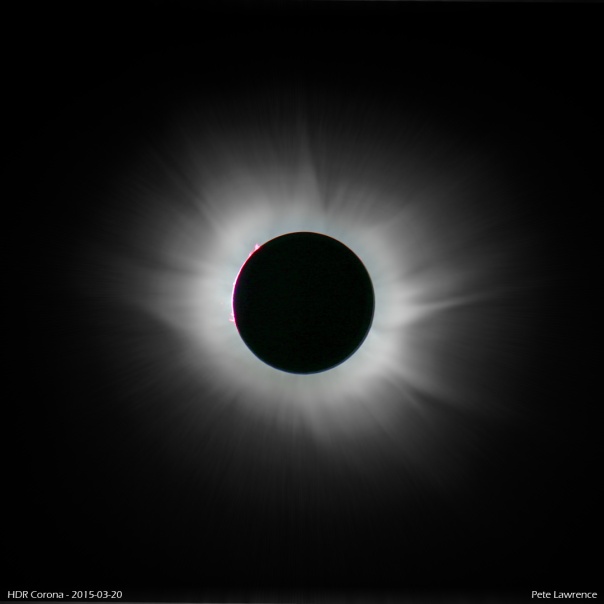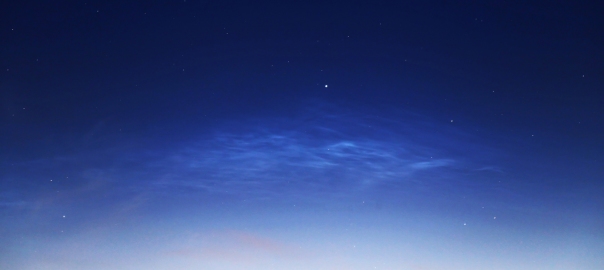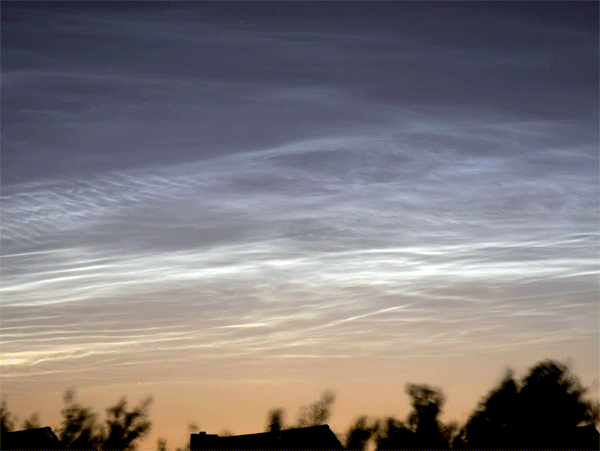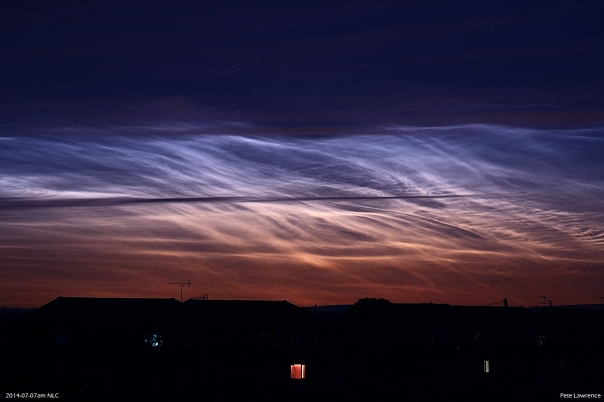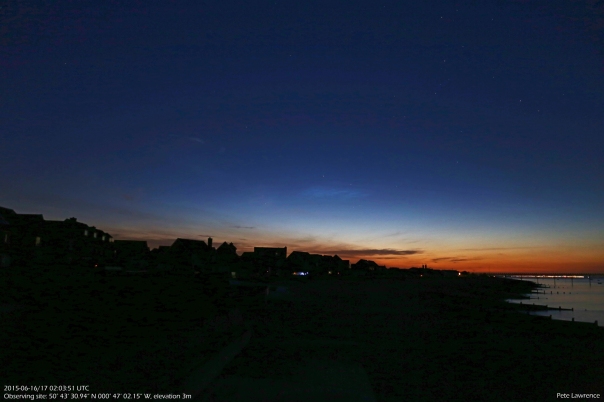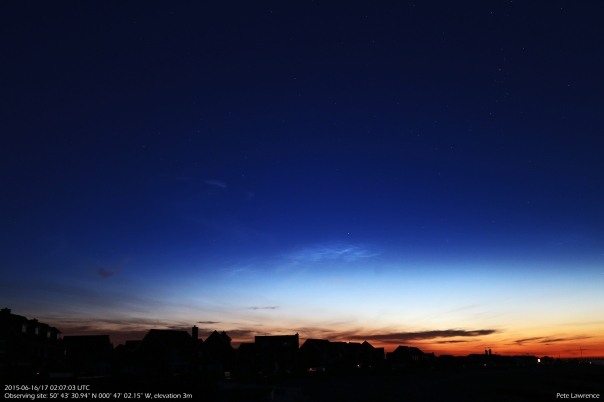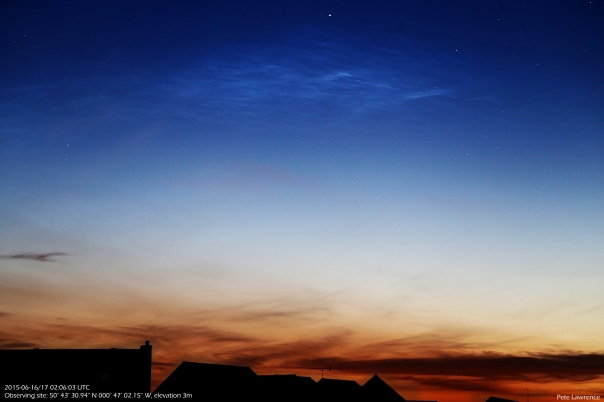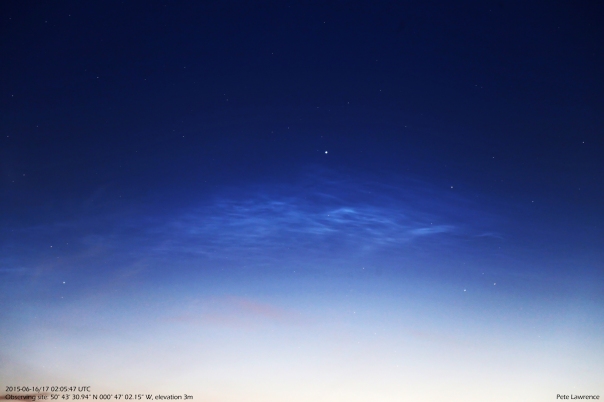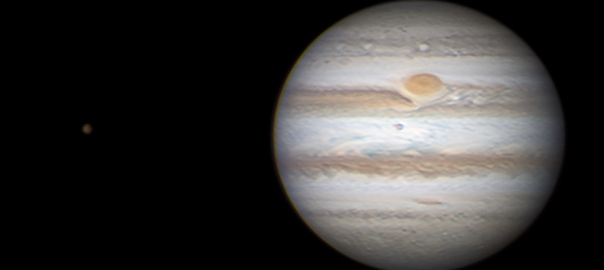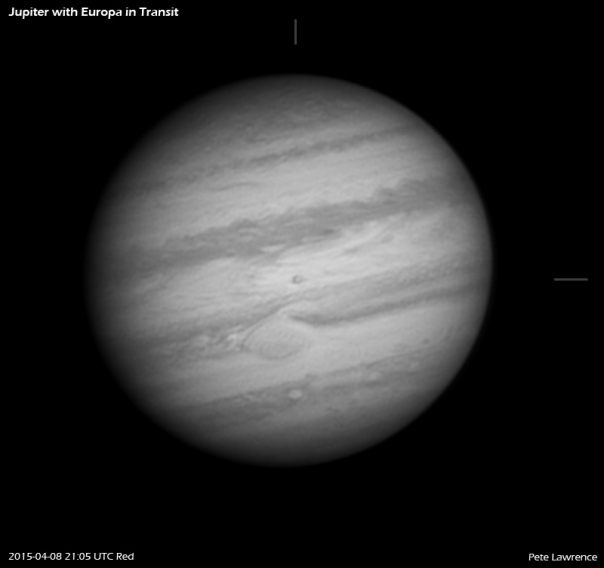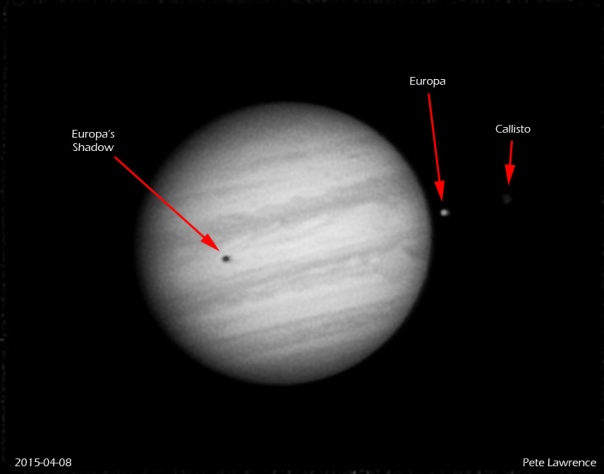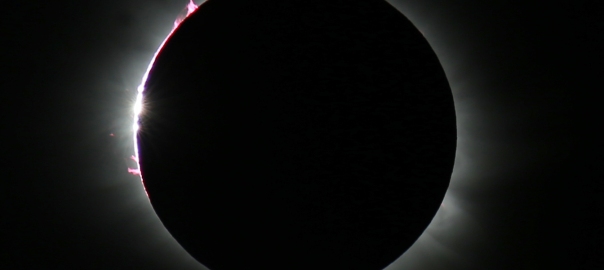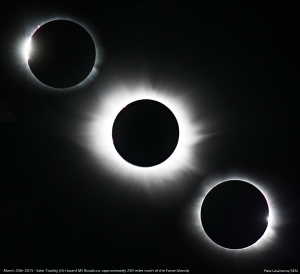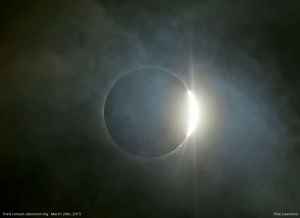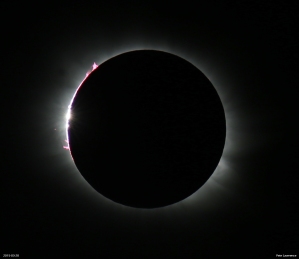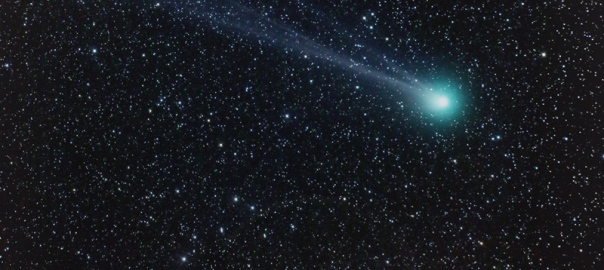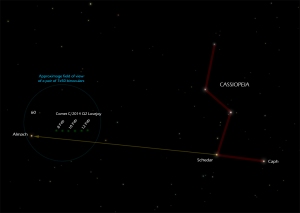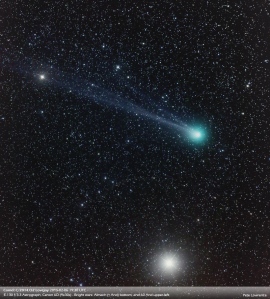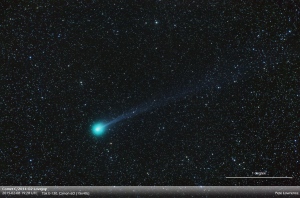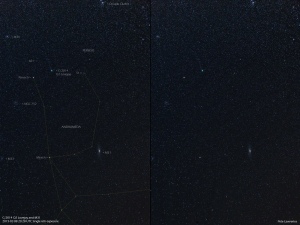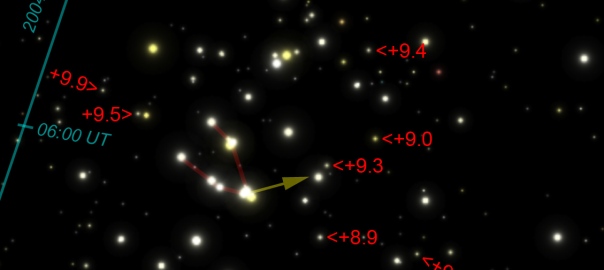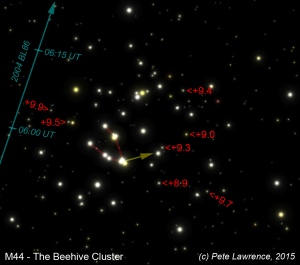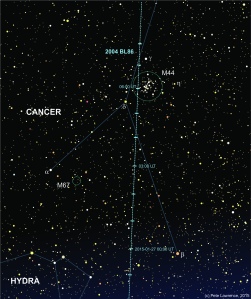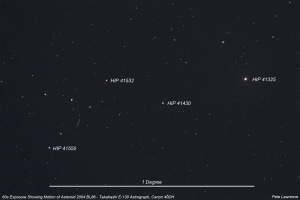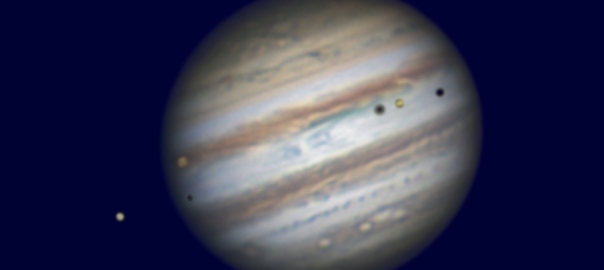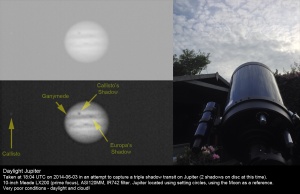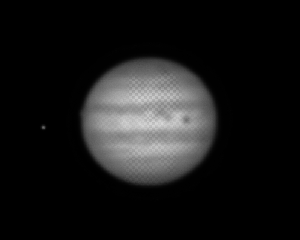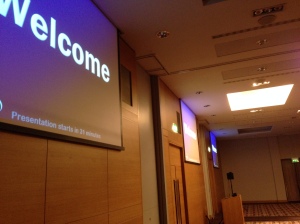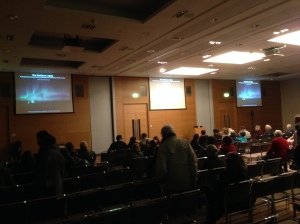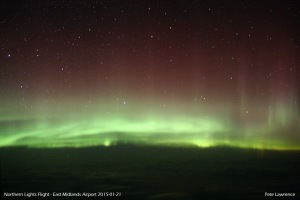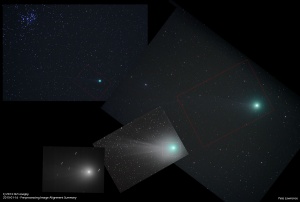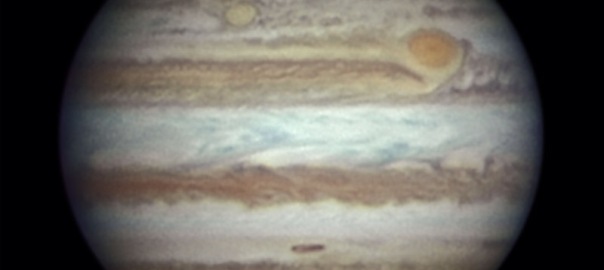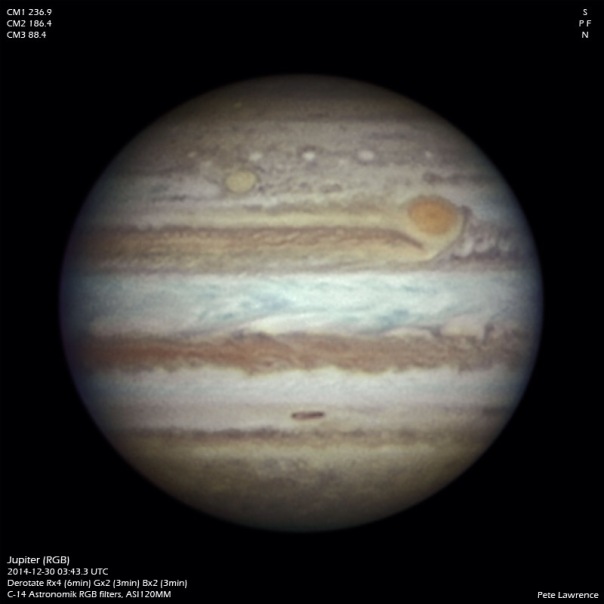This is an account of my personal experience on the day of the March 20th 2015 total eclipse of the Sun…
Decisions, decisions
The best place to start is really on the evening of March 19th, when myself and my travelling companions were sitting down to dinner aboard the Fred. Olsen cruise ship MS Boudicca. The WiFi reception on board had been a little temperamental but during a pre-dinner drink in the aptly named Observatory Lounge, I had managed to get connected and downloaded the latest weather data for region we were headed. You can take weather models with a pinch of salt when they’re predicting relatively fine detail many days ahead but now it was possible to see what was being predicted for just a few hours ahead. I was a little concerned at what I saw.

For a number of days, the model had been predicting a broken cloud area with its southern edge just south of the point of greatest eclipse – our intended location. A thin precipitation band was also forecast running east west, through the Faroe Islands to the south of us. The new model forecast showed that the broken cloud area had become smaller and that the precipitation band had widened in latitude. The northern edge of the band was full of snow and now covered our location.
This is one of those tricky situations where you need to take a calm, rational decision. It might seem obvious what to do given the model forecast, but what if this was wrong? What would happen if I gave advice which took us out of a good position and into cloud? I’d been referring to the model during the previous days of the cruise and had been making predictions as to what would happen based on it. The predictions had been pretty accurate (to the hour!) giving me enough confidence to bother the bridge with the new information.

We’d had a meeting with Captain Lars Kjeldsen a few days earlier and had discovered that he was extremely open to discussion about our final viewing position. So I sent an email from reception to the bridge explaining what I’d seen and suggesting it would be prudent to head further north.
An early start
At 03:25 UT I woke up – a full 95 minutes before my alarm was set to go off, due to pitching action of the ship. To be honest, it felt like someone had put their foot on the accelerator and we were cutting through the waves at a fair pace. At 05:00 my alarm did its thing and I got up. I decided to take a tripod bag out on deck and grab my observing spot. As it happened my eagerness was unnecessary because it was snowing heavily and the deck was deserted.
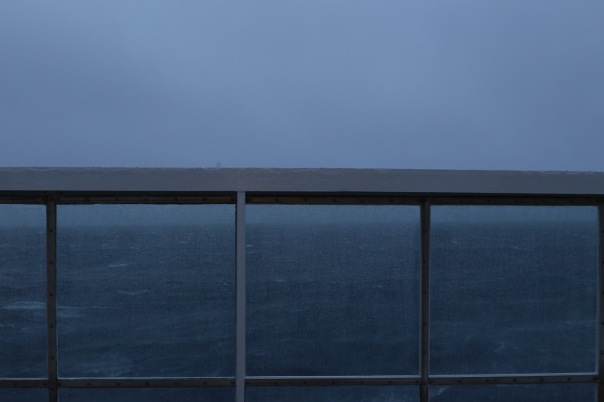
I’d worked out a good location with plenty of visibility earlier in the trip. There are lots of factors to take on board including vibration from the engines which affected the upper decks. I dropped my tripod bag in my chosen location and for some reason which escapes me now, stood there getting wetter and wetter. My colleague, Dr Paul Abel, joined me soon after and had the good sense to stand under a cover rather than out on deck! I think at this point we were both a little numb.
The run up to the eclipse had us all imagining what eclipse day would actually be like. For me, I’d been working on this one for over 2 years. The reality of the day really hit home – I don’t think any of my imaginings had heavy snow falling! I hoped that the positional adjustment request I’d sent up to the bridge was being enacted as Bouddica continued to slice through the waves.
Misery
A few others joined us looking as miserable as we felt. One chap touched me on my shoulder and said not to worry, as it wasn’t really my fault. Having been an observational astronomer for more years than I care to remember, I knew that it was imperative to get a handle on what the conditions were actually like. Sunrise occurred behind a thick wall of cloud and the sky simply got an overcast shade of grey brighter.
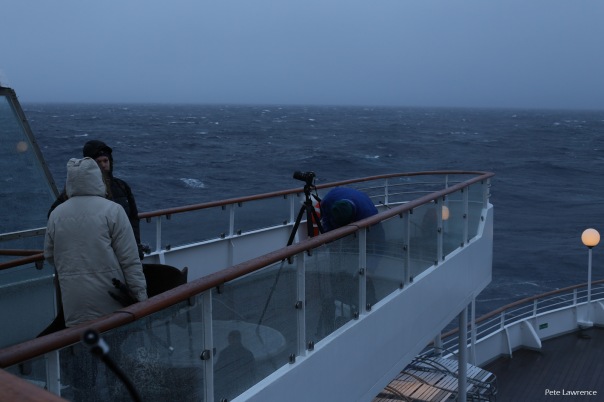
As my wife joined us around 06:30, the snow had stopped. This was a good sign. I’d figured that if we were trying to punch through the precipitation band, this would be the first sign we’d succeeded. We looked hard for evidence of structure in the overcast blanket. Both Paul and I could see it faintly speeding across the sky. It was at this point I knew we had a good chance of seeing something.
Things started looking brighter
Others joined us as the minutes passed and at 08:00 I got a call to head up to the bridge. Captain was there (of course!) and showed me the charts and location Boudicca was heading for. The weather wasn’t great but he’d seen some thinning cloud ahead and was now heading for that. During our previous meetings I’d requested that, weather permitting, the ship be orientated to point northeast so the starboard (right) side of the ship and the aft decks had the best view. This also gave the largest deck area for the 800+ passengers on board. Captain was aware of this request but pointed out that the weather might mean the ship may have to change heading. In the event, he skillfully managed to maintain the same course throughout the eclipse.

I gave a surprisingly chirpy commentary to the ship – or so I was told afterwards. This coincided with fleeting bright patches in the cloud where the approximate position of the Sun could be seen. While giving my commentary, I remember seeing the bridge crew all excitedly looking out the starboard window. Captain took a look too and signalled back with a thumbs up. Things were improving and spirits were cautiously lifting.
A busy first contact
I returned to the deck with a radio handset. I’d agreed I would do a number of further bridge announcements. In the lead up stages to the cruise, the question had been raised as to whether I’d give a running commentary of the event. I’d declined to do this on the grounds that an eclipse is a very emotional and personal event to witness. The last thing you need under such circumstances is someone jabbering away and ruining the mood. I would guess that all Boudicca’s passengers would now understand why I made that decision now.
The clouds were noticeably thinning and the crowds were starting to grow, both in number and in excitement. After the wet start and with decreasing deck space, I decided to reduce my original rather ambitious equipment set up and simply go for a DSLR with a 500mm lens.
I just had enough time to set this up before I got another call to the bridge at 08:30. First contact was due around 08:42 and the variable cloud cover didn’t give me any time to focus or correctly adjust my camera. Rather cruelly, I passed this task over to my wife Tessa who, at the time, wasn’t that familiar with DSLR cameras!
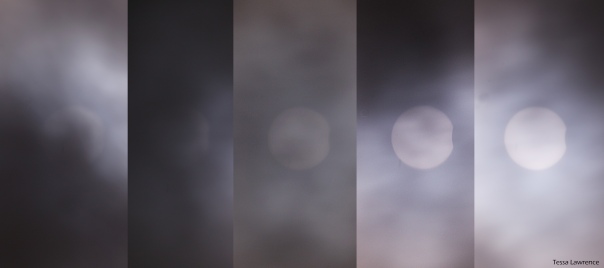
I headed up to the bridge and gave another even more excited commentary. First contact started while I was up there waiting to assist Captain who was giving a radio interview. In the end, they kept the interview short and I wasn’t needed. However, the bridge crew confirmed that the first dent could be seen out of the right side of the Sun’s disc.
It’s perhaps not that much of a surprise that this piece of celestial clockwork could be seen just as anticipated. Modern predictions are very accurate and we were inside the path of totality, actually very close to the centreline.
Despite this, for this guide astronomer at least, there’s always a great sense of relief knowing that the thing which you’ve been promoting and presenting is actually happening exactly as predicted!
Blue sky appears
After the 08:30 commentary, I made it back to my camera kit in time to take some pictures. Tessa had done well getting the camera set up. The partial phase was now well under way and could be seen through thick cloud without glasses (naughty but inevitable!) and with glasses when the cloud thinned sufficiently.


Blue sky started to appear ahead and Captain kept our heading northeast. It was great having some of our immediate party of friends – Kevin McNulty and Jon Culshaw in our bit of crowd. Although they may not have realised it, the nerves required to make some of the positional decisions were greatly assisted by their kind words of confidence in my ability.
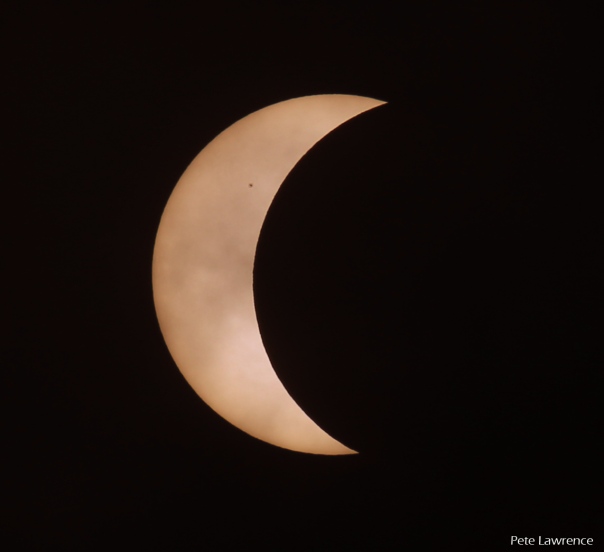
I got another call to the bridge as the Sun’s crescent was thinning. At this time the photography started to get trickier and I was grateful that my colleague, Paul Abel stepped in to do next bridge announcement instead.
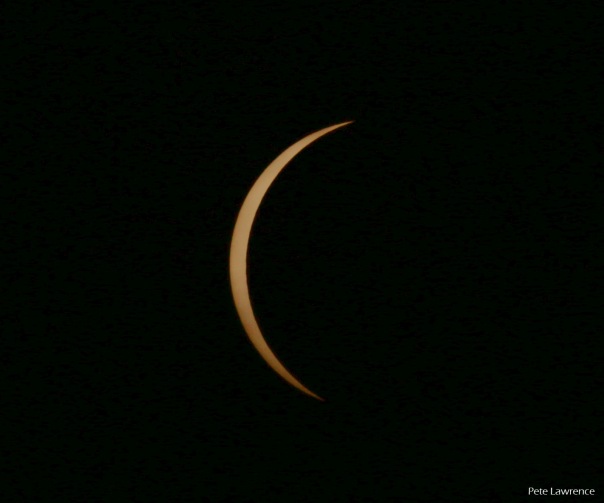
As he returned, totality was getting very close. A peculiar light started to enshroud the ship and all eyes were straining to see what the weather gods had arranged for us. Ahead of the ship there was a huge patch of blue sky!
Totality approaches
As the horns of the crescent Sun closed at an ever accelerating rate, the light levels dropped in a way that I imagine you’d experience if you were falling down a well. As this happened the big patch of blue sky was in front of the Sun – we were going to see totality!
One of my cameras was pointing to the southwest as the Moon’s shadow approached. Here’s what it saw (time runs from upper-left, upper-right, lower-left and lower-right).
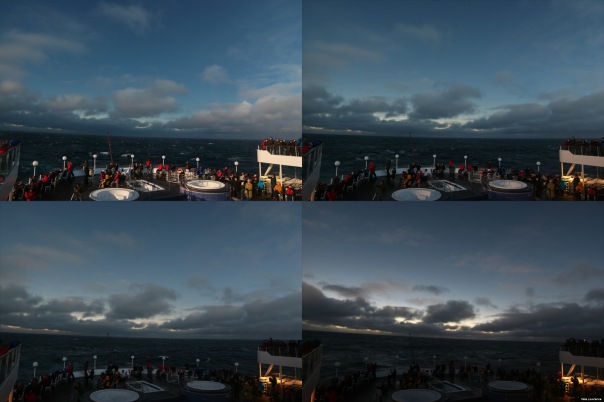
The first diamond ring
The first diamond ring appeared and filters came off cameras and eclipse glasses were removed. An eerie but beautiful darkness engulfed us. It wasn’t total darkness but just odd. The Sun hung in the sky with the inky black disc of the Moon in front of it. The solar corona appeared and glowed with awe and majesty around the edge of the eclipsed Sun. The sky turned an incredible turquoise blue. The scene looked like we had fallen out of reality into a painting. Then, the thing that eclipses do to you happened – emotion took over.

Tears rolled down the cheeks of many eclipse chasers. The realisation that we were witnessing something so, so special took hold. This was an eclipse that on paper at least, had a very low probability of success. With skill, tenacity and luck we’d made it and we were finally standing under the shadow of the Moon and witnessing probably the most special event in all of nature.

Totality!
The pink chromosphere and equally pink prominences appeared around the leading edge of the Moon as the first diamond ring faded.

One of these had a small detached portion which many claimed to have seen visually.

Totality lasted for a full 2 minutes 46 seconds because we were so close to the point of greatest eclipse duration. Actually, this is a technical measure of totality determined by the amount of time between second and third contact. In reality, the first diamond ring to the second lasts for longer than this period because the diamond rings occur seconds before and after technical totality. From the first diamond ring to the second, as measured by my camera, the spectacle was over 3 minutes long.
The corona during totality was as beautiful as ever and no camera can ever do it justice. Below is a high dynamic range composite to try and emulate its visual appearance.

The second diamond ring
Being such an unusual event to actually see, time appears to speed up during totality. So it was for this eclipse as the second diamond ring started to appear. Some thin clouds had crept back across the sky which only seemed to enhance the view.
For the third contact diamond ring, I switched my camera into video mode. The resulting movie can be seen below (the voices are mainly Paul Able and Tessa Lawrence). We were at sea as this was taken and the ship was moving about considerably. This is reflected in the movement of the eclipse image around the frame – I did my best to keep it contained!
>> Watch the third contact diamond ring movie here <<
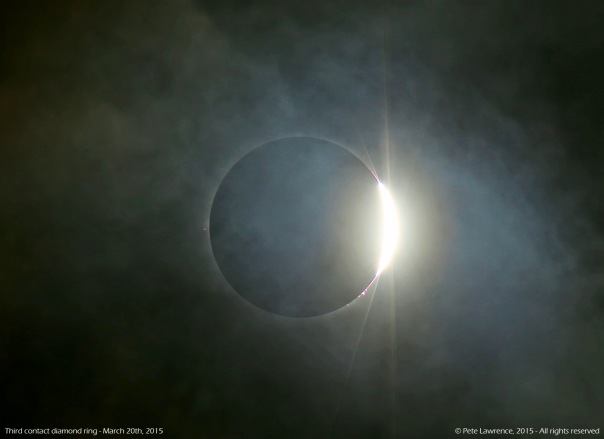
And then, it was over.
I headed up to the bridge for one last commentary and to assist Captain with another radio interview. Everyone was elated up there. The whole ship became alive with smiling faces – some appeared to be in a state of astonished disbelief that we’d actually seen the eclipse at all. But we had, and it felt like we’d pulled a rabbit out of the hat.
I’ve seen eclipses in clear blue skies, and through cloud. Clear blue versions are beautiful and fulfilling but the risk factor of cloud, when it clears at the right moment, delivers something really special. It feels as if you’ve had to work for the experience – which in this case we certainly did!
The close of the day
As a final treat, as we headed towards the Faroe Islands on the evening of the 20th, an aurora was active to the north. This was a low, but bright green glow embedded within the clouds. A fitting end to what had been a fantastic adventure.
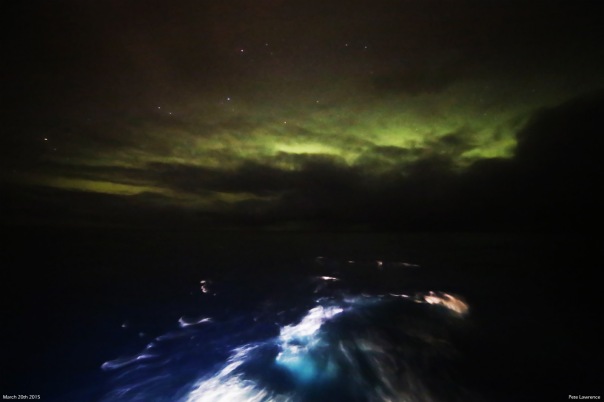
The future
There’s another total eclipse visible from Indonesia in 2016, but my next venture will be the 2017 eclipse visible from the USA. I’ll be over there with Omega, the company that engaged me this time round. I’ve worked with them since 2005, mostly taking people up to see the aurora and eclipses.
We had a magnificent eclipse success in 2006 with 1,600 people being transported to Turkey to get a superb view of totality in pristine blue skies. In 2009 we took a party over to China to see the longest period of totality of the 21st century. Weather was poor along much of the eclipse track for that one, but again with good planning, we saw the whole event.
I can’t wait!
I’d like to dedicate this article to my wife Tessa, and good friends Peter and Jen Truman, Paul Abel, Kevin McNulty and Jon Culshaw.
All images are copyright Pete and Tessa Lawrence and may not be used without permission.
Update: Never happy to leave things alone – here’s my latest process on the solar corona. This is a tricky thing to tease out from results obtained from a moving platform – i.e. the deck of MS Boudicca – but not impossible…
